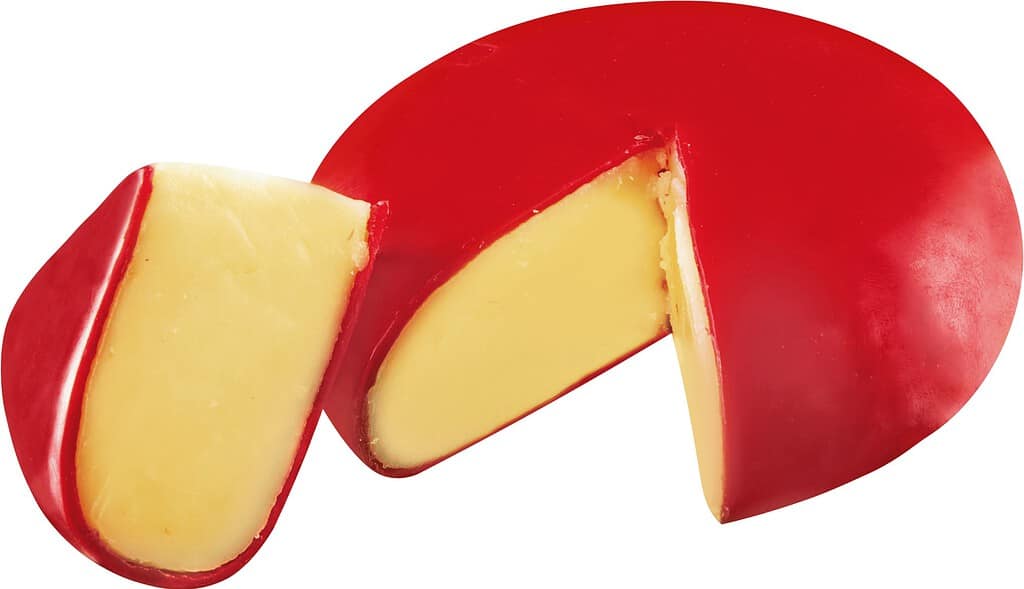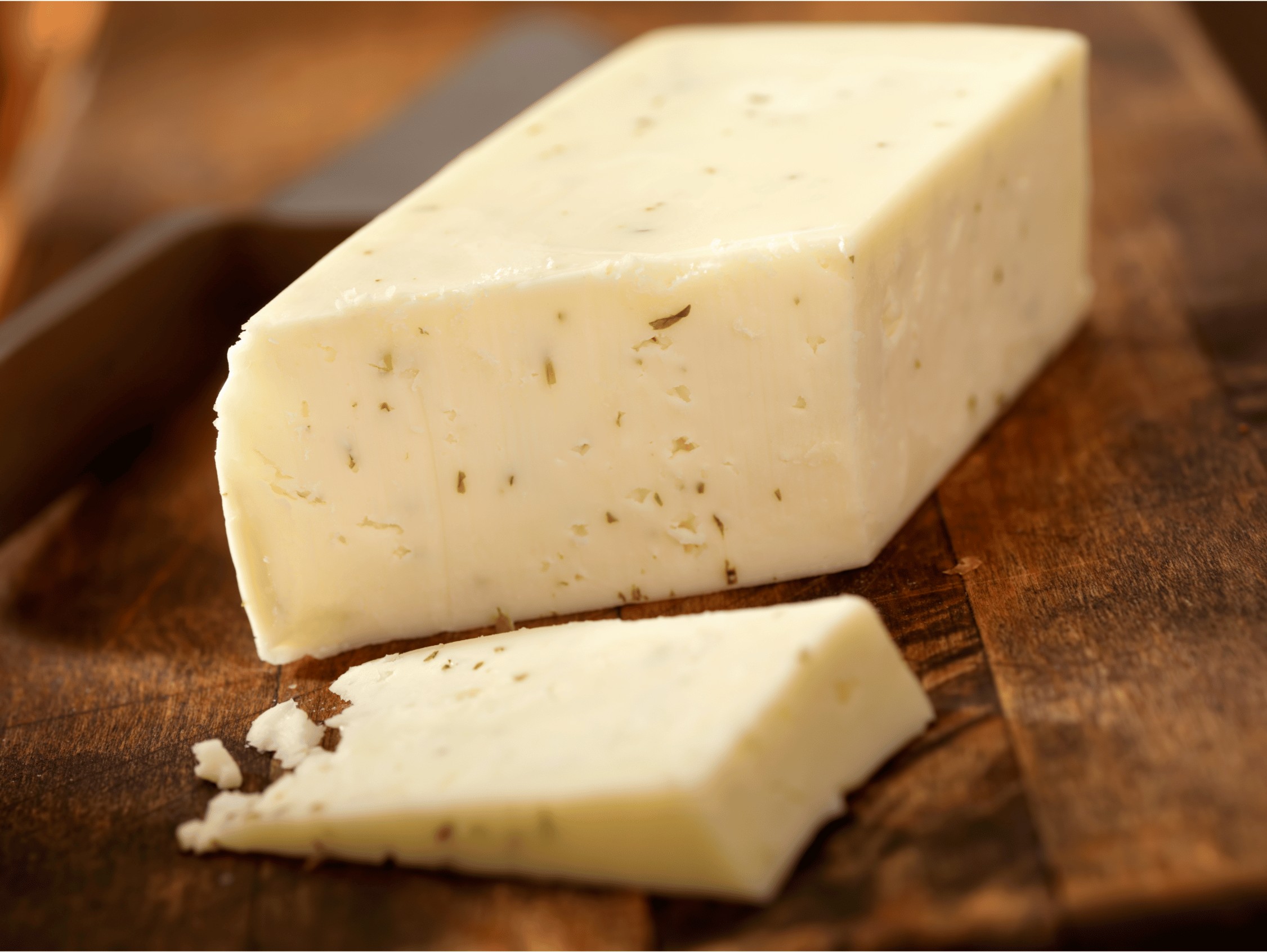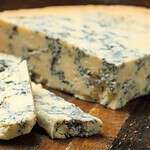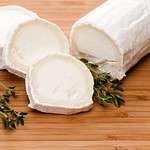Gouda cheese, which hails from the Netherlands, has a distinctive taste that can range from mild to robust, depending on its age. As a semi-hard cheese, young Gouda offers a creamy and slightly sweet flavor that is highly appealing to many palates. When it matures, the taste intensifies, becoming more complex with hints of caramel and a savory, almost butterscotch flavor that makes it much more nuanced.
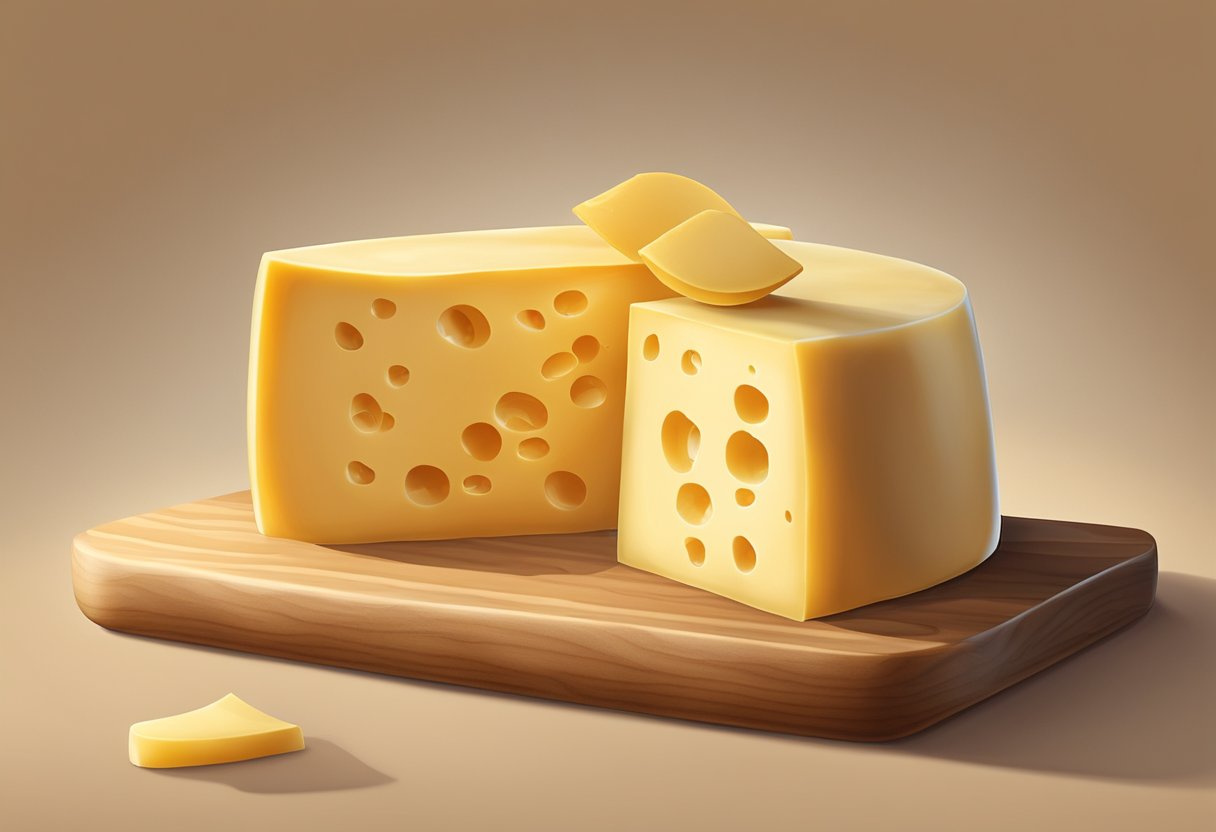
The texture of Gouda also varies with age; younger Gouda has a smooth, elastic consistency, while aged Gouda becomes harder and can even develop crunchy protein crystals that give it a unique mouthfeel. Its versatility allows Gouda to be a favorite ingredient in various dishes, but it’s equally delightful when savored on its own or with a glass of your preferred wine.
Key Takeaways
- Young Gouda is creamy and sweet, while aged Gouda takes on a savory and caramel-like taste.
- Gouda’s texture transitions from smooth and elastic in young cheese to hard with protein crystals in aged varieties.
- This cheese is not only enjoyed on its own but also used in a wide array of culinary contexts.
Origins of Gouda Cheese
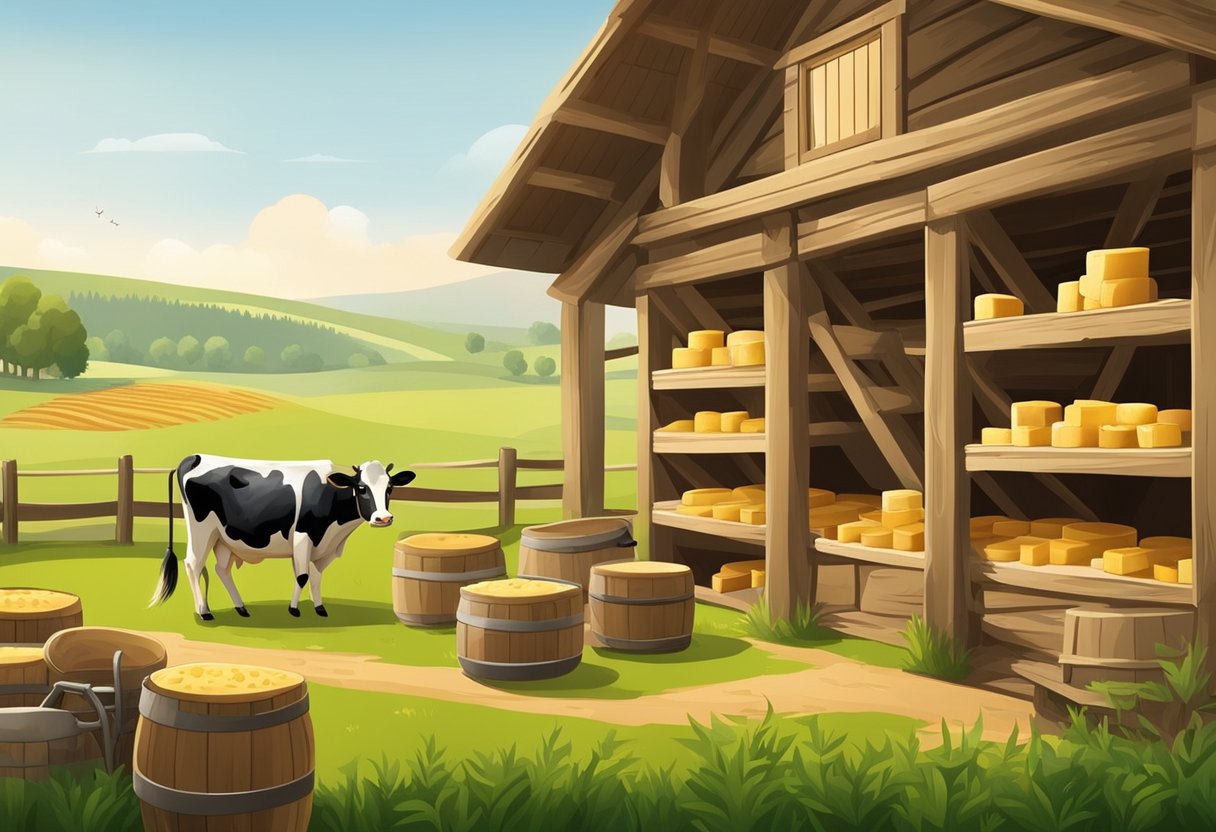
We explore the rich history and the specific regional importance of Gouda cheese to understand its origins better.
Historical Background
Gouda cheese is named after the city of Gouda in the Netherlands, although it was not originally made there. The name comes from the fact that traders historically exchanged this cheese in Gouda’s markets during the Middle Ages. Made from the milk of cows grazing in the lush pastures of Holland, the history of Dutch Gouda dates back to at least the 12th century, making it one of the oldest recorded cheeses still made today.
Geographical Indication
Our cheese holds a Protected Designation of Origin (PDO) status, specifically called Noord-Hollandse Gouda, signifying that true Dutch Gouda is produced in the northern provinces of the Netherlands. This designation ensures that each wheel of cheese adheres to strict guidelines regarding its production and origin, protecting its authenticity and history. The Netherlands is renowned for its dedication to cheesemaking and the PDO status guarantees that Gouda cheese remains a cherished Dutch commodity.
Cheesemaking Process
In this section, we’ll explore the detailed process of crafting Gouda cheese, from the selection of basic ingredients to the intricate aging that develops its distinctive flavor.
Basic Ingredients
The creation of Gouda cheese begins with high-quality cow’s milk, the primary substrate. This milk is a rich source of lactose, protein, fat, and calcium, necessary components for the cheesemaking process. We often add lactic acid bacteria to the milk, which plays a critical role in flavor and texture development.
Curdling and Whey Separation
We initiate curdling by adding rennet to the milk, which separates it into solid curds and liquid whey. The curds contain the proteins and fats, essential for Gouda’s body, while the whey is predominantly water with some proteins and lactose. We then carefully remove the whey, retaining the curds for the next steps.
Shaping and Aging
Once curdled, the curds are pressed into molds to form wheels of cheese. These newly shaped wheels are then soaked in brine, which infuses them with salt for flavor, aids in forming a rind, and acts as a preservative. After brining, we transfer the cheese to a controlled environment to begin the aging process. During this time, the aged Gouda develops its texture and becomes firmer.
Flavor Development
The chemistry of aging is fascinating, as it involves a symphony of enzymatic reactions. The breakdown of fats and proteins during the aging process leads to the formation of amino acid crystals, such as tyrosine, which contribute to the characteristic nutty flavor and crunchy bits in aged Gouda. Throughout aging, the cheese is periodically coated with wax to prevent drying out and to create the recognizable rind that encases the rich flavor profile within.
Characteristics of Gouda Cheese
We explore the distinctive attributes of Gouda cheese which is renowned for its rich texture, diverse flavor spectrum, and the profound influence of aging on its characteristics.
Texture and Color
Gouda cheese boasts a variety of textures that change significantly with age. Young Gouda presents with a smooth, semi-hard texture and a notable moisture content, making it quite pliable and soft to the touch. As the cheese matures, it transforms into a harder, more brittle form. The color of Gouda ranges from a light yellow to a deep orange, especially noticeable in cheeses that have been aged for longer periods.
- Young Gouda:
- Texture: Smooth, semi-hard
- Color: Light yellow
- Aged Gouda:
- Texture: Hard, brittle
- Color: Deep orange
Flavor Spectrum
The flavor of Gouda cheese can be described as mild, sweet, and buttery when young, which appeals to a wide range of palates. The taste evolves as the cheese ages, amplifying into a rich, savory, and somewhat nutty profile. This transition in taste makes aged Gouda a favored choice for those seeking a more robust cheese experience.
- Flavor Profile:
- Young: Mild, sweet, buttery
- Aged: Savory, nutty
Aging Impact
The age of the cheese plays a pivotal role in defining the overall flavor and texture of Gouda. We categorize Gouda into young and aged to highlight this impact. Young Gouda is typically aged for a few weeks to a few months, retaining a higher moisture content and a milder flavor profile. Conversely, aged Gouda, which can be matured for up to several years, exhibits reduced moisture, resulting in a firmer texture and more concentrated flavor, often with a distinctively pronounced nutty essence.
- Impact of Aging:
- Young Gouda:
- Age: Few weeks to months
- Moisture: Higher
- Flavor: Milder
- Aged Gouda:
- Age: Up to several years
- Moisture: Reduced
- Flavor: Pronounced and nutty
- Young Gouda:
Types and Variations of Gouda
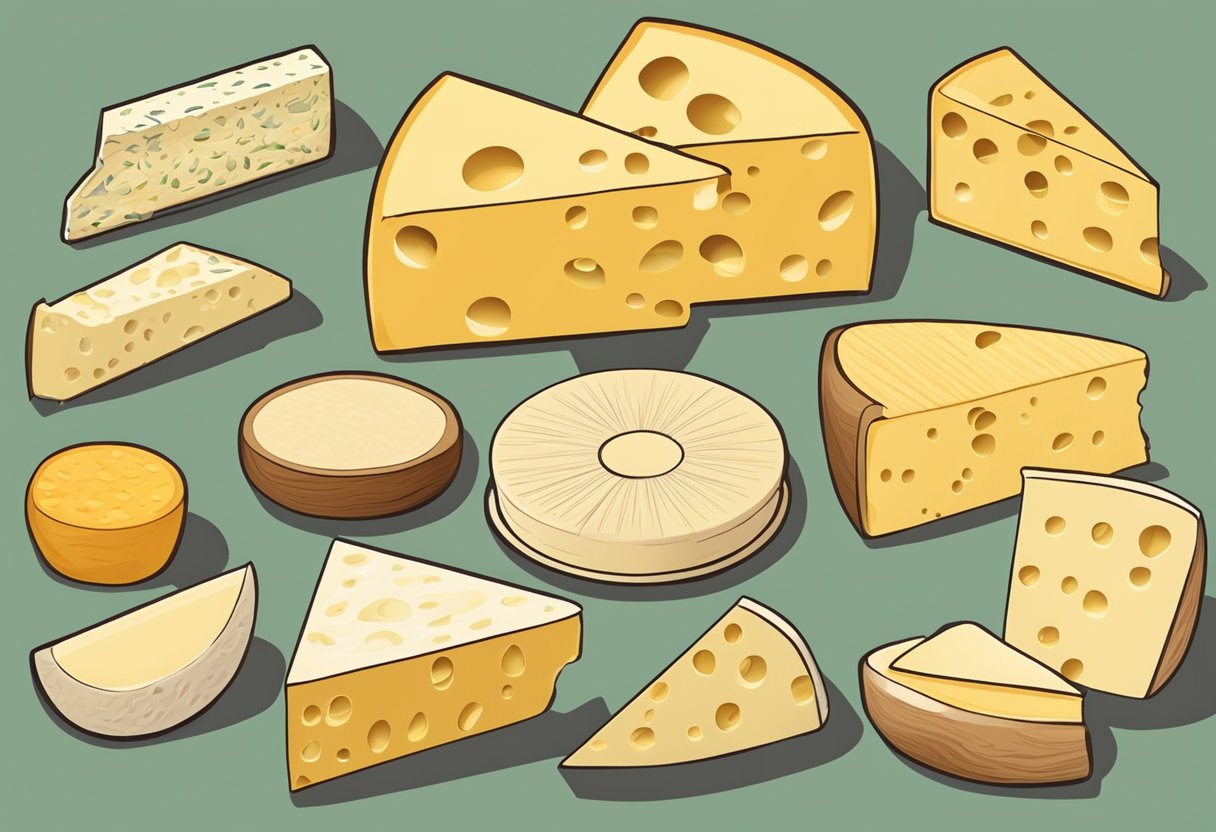
Gouda cheese varies widely based on age and additional flavorings like smoke or spices. Our exploration will guide you through the characteristics of aged versus young Gouda as well as the distinct profiles of infused and smoked varieties.
Aged Versus Young
Young Gouda is notable for its smooth, creamy texture and mild flavor. It’s essentially a semi-soft cheese that is aged for a brief period, typically four weeks. This makes it ideal as a melting cheese suited for sandwiches and sauce applications. On the other hand, aged Gouda carries a much firmer texture and a robust flavor. The aging process, which can last from 18 months to several years, intensifies the cheese’s taste and produces a pronounced sharpness with notes of caramel. The hard texture of aged Gouda renders it great for grating over dishes or enjoying as a snack with a strong drink.
Infused and Smoked Gouda
Infused Gouda presents a creative twist on the traditional flavor by incorporating various herbs, spices, or other flavors like truffles or nettles. The process of infusing these elements into the cheese adds complexity and can range from mildly aromatic to boldly intense.
Smoked Gouda is another popular variation, where the cheese is traditionally smoked over burning wood chips. The resultant smoked Gouda offers a distinctive, earthy flavor that complements the natural creaminess of the cheese, enhancing its suitability for melting into rich, smoky dishes. The smoking process imparts a golden brown rind that encases a soft and creamy interior, balancing texture with a smoky undertone.
Nutritional Profile
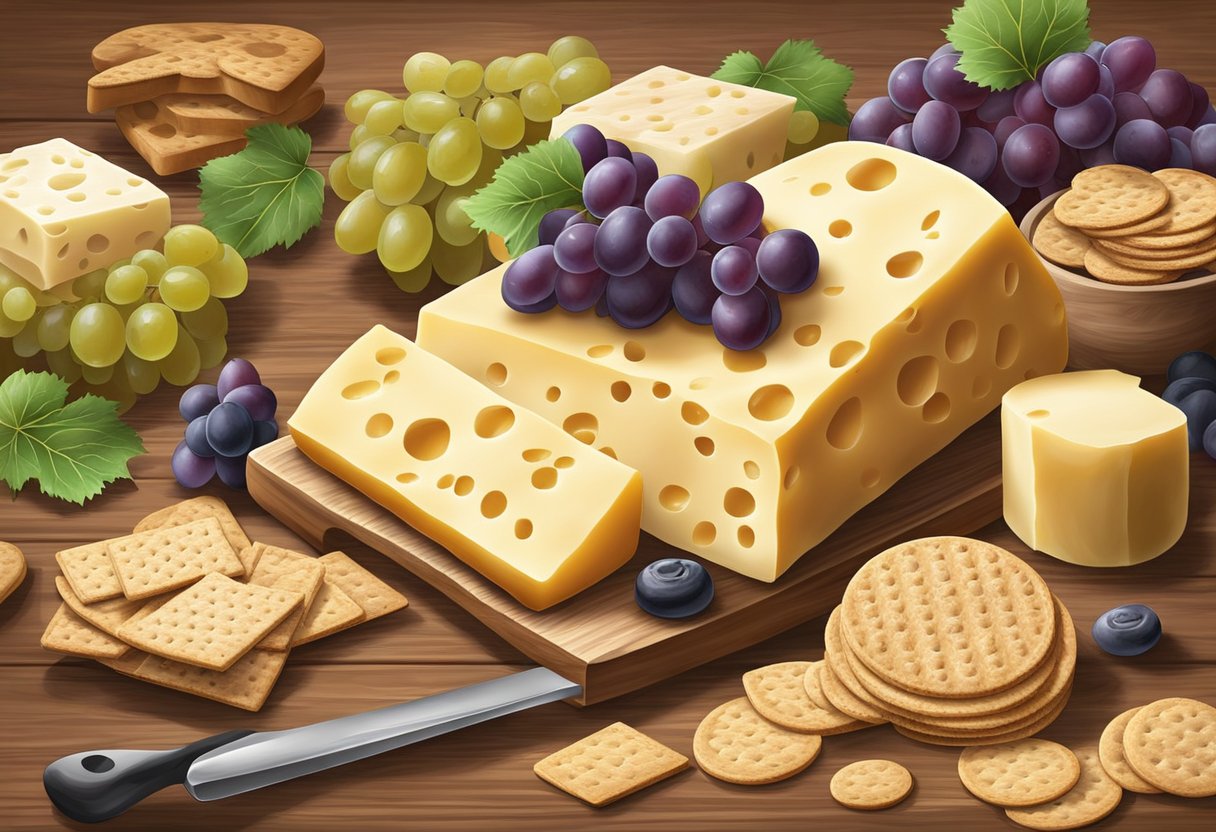
In discussing the nutritional profile of Gouda cheese, we focus on its macronutrients, key minerals, and considerations for those with lactose intolerance. Gouda cheese offers a rich source of protein and fat, alongside essential minerals such as calcium.
Macronutrients and Minerals
Calories: A 1-ounce (28 gram) serving of Gouda cheese typically contains approximately 100 calories.
Fat: Gouda is relatively high in fat, with around 8 grams per serving. This includes saturated fats, which should be consumed in moderation.
Protein: As a dairy product, Gouda provides a good amount of protein, about 7 grams per serving, necessary for body repair and muscle maintenance.
Calcium: Known for its calcium content, Gouda offers about 200 mg per serving, contributing to bone health and density.
| Nutrient | Amount per 1 oz. (28g) Serving |
|---|---|
| Calories | 100 kcal |
| Fat | 8g |
| Protein | 7g |
| Calcium | 200mg |
Lactose and Digestibility
Lactose Content: Gouda cheese is lower in lactose compared to other cheeses, with aging further reducing its lactose levels, making it a more digestible option for those with sensitivities.
Digestive Considerations: Our digestion processes break down the protein and fat in Gouda cheese efficiently, especially when consumed in moderation. The lactose content might cause issues for individuals with lactose intolerance, but the amount is typically small and can often be tolerated.
Culinary Uses

In our exploration of Gouda cheese’s culinary applications, we focus on its exceptional cooking behavior and how it enhances dishes through various pairings and combinations.
Cooking and Melting Behavior
Gouda cheese is renowned for its smooth melting characteristics, which makes it an ideal choice for grilled cheese sandwiches and casseroles. The texture of Gouda ranges from semi-hard to hard, depending on its age, but regardless of maturity, it melts evenly and creates a creamy consistency. Young Gouda cheese melts exceptionally well, hence it’s often used in various hot dishes:
- Sandwiches: Enhances the texture and adds a rich, slightly sweet flavor.
- Casseroles: Contributes to a creamy and cohesive texture.
- Melting cheese in general: Aged Gouda will not melt as readily as younger varieties but still adds depth of flavor to cooked dishes.
Pairings and Combinations
Gouda cheese boasts a versatile flavor profile that pairs beautifully with a range of accompaniments, elevating the taste experience. Its nutty and buttery notes are complemented by fresh and dried fruits, while also standing up well to stronger flavors like those found in nuts and red wines. Here’s a breakdown of ideal pairings:
- Fruits: Apples, pears, and grapes bring out Gouda’s sweetness.
- Nuts: Walnuts and almonds add a textural contrast and nuttiness.
- Wines: A bold red wine or a lighter white wine can balance Gouda’s richness.
- Sandwiches and Salads: Incorporating Gouda adds a gourmet touch.
- Cheese market offerings: Aged Gouda is often sought after for its nuanced flavors.
Combining these elements with Gouda creates a harmonious taste sensation, suitable for a variety of culinary contexts – from a simple cheese board to a fully composed dish.
Storage and Handling
When we store Gouda cheese, proper techniques are crucial to maintain its quality and flavor. We recommend keeping Gouda cheese in the warmest part of the refrigerator, such as a vegetable drawer, which typically provides a stable temperature ideal for storage.
Refrigeration: Upon purchasing Gouda cheese, if it comes wrapped in plastic, we suggest removing it from the plastic wrap. This is because plastic can trap moisture and lead to the development of mold. Instead, we opt for wrapping the cheese in wax paper or parchment paper followed by a loose covering of aluminum foil. This method allows the cheese to breathe and limits the risk of unwanted moisture.
-
Handling the Rind: Gouda cheese traditionally comes encased in a yellow wax rind. We do not consume this rind, but we preserve it until the cheese is fully consumed. The rind helps to keep the cheese moist and prevents it from drying out.
-
Slicing Advice: When we’re ready to use Gouda, we carefully cut through the wax to remove only the portion of cheese that we plan to consume. The remaining wax should be left intact to cover the unused portion.
Usage After Opening: Once Gouda is opened, we consume it within a few weeks for optimal taste and texture. We check regularly for any signs of spoilage, such as an off smell or mold growth, especially if the cheese has been stored for some time.
In conclusion, proper storage and handling ensure that we enjoy the full range of flavors that Gouda cheese offers. We adhere to these guidelines strictly to ensure our culinary experiences with Gouda remain exceptional.
Consumer Guide
When selecting and serving Gouda cheese, we aim for quality and authenticity to ensure the best experience. It’s crucial to understand where to buy, how to serve, and the correct pronunciation to appreciate this Dutch delicacy.
Purchasing Tips
- Look for Quality Labels: Seek out Gouda with a Protected Designation of Origin (PDO) label to guarantee authenticity.
- Choose the Right Store: Visit specialty cheese markets or stores with knowledgeable staff to find the highest quality Gouda.
- Check for Freshness: Make sure the cheese’s packaging is intact and the product is well within its sell-by date.
Serving Recommendations
-
Pairings: Gouda pairs excellently with a variety of foods and drinks. Here’s a quick guide to pairing:
Pairing Type Suggested Pairing Fruits Apples, pears, and grapes Bread Crusty bread, such as baguettes or artisan loaves Alcoholic Drinks Red wines, port, dark beers or ales Non-Alcoholic Sparkling cider or robust coffees -
In Recipes: Cut Gouda into slices for sandwiches, shred it for casseroles, or cube it for salads to enhance these dishes’ flavor profiles.
Pronunciation and Naming
- Pronounce with Care: The correct pronunciation of ‘Gouda’ uses the Dutch “g,” sounding like “how-da”.
- Dutch Naming: In the Netherlands, Gouda is often named based on its age, such as “Jong” (young) or “Oud” (old), which also indicates flavor profile and texture.
Cultural and Economic Impact
In this section, we explore the significant role Gouda cheese plays in commerce and culture, from its domination in cheese markets to its emblematic status within Dutch heritage and beyond.
Global Trade and Recognition
Our journey begins with a focus on global trade and Gouda cheese’s impact on it. Gouda, being one of the most traded cheeses in the world, has a profound influence on international markets. The cheese originated in the Netherlands, and Dutch cheese has been a highly esteemed export product for centuries. Historically, cities like Gouda and Alkmaar hosted bustling cheese markets that were critical hubs for trade. Even today, these markets exist, serving as tourist attractions and symbols of a rich cheesemaking tradition.
Trade agreements have allowed Gouda to become a staple in many countries, including America, where it enjoys popularity. The cheese’s global presence bolsters the Dutch economy and showcases the country’s dairy prowess. Moreover, Gouda’s Protected Designation of Origin (PDO) status contributes to maintaining its reputation and quality on the world stage. It is the uniqueness and consistency of Gouda that has led to its broad recognition.
Cultural Significance
Turning to Gouda cheese’s cultural significance, we note its entrenched role in the Dutch way of life. Gouda is not merely a product but a symbol of our collective heritage; it is woven into the fabric of our social and cultural history. The cheese reflects centuries of Dutch cheesemaking prowess and has become synonymous with Dutch culture itself.
In terms of ceremonial import, Gouda plays a pivotal role in festivities and is a point of national pride. Its cultural imprint extends beyond the Netherlands, particularly in America where it has been warmly embraced. Both historically and presently, Gouda cheese stands as a testament to the cultural bridges built through the love of fine cheesemaking. Its story is shared at cheese markets and within the narratives of families whose lives have been tied to its production and consumption over generations.
Legal Protection and Standards
We recognize the importance of protecting the authenticity and quality of Gouda cheese, especially since it’s a product with deep cultural and historical significance. The term “Gouda” refers not only to the cheese but also to the traditional methods of production that have been passed down through generations. To ensure consumers receive the genuine product, various legal protections and standards have been implemented, most notably the Protected Designation of Origin (PDO) status.
Protected Designation of Origin (PDO)
- Geographical: Gouda cheese with PDO status must be produced in the Netherlands.
- Quality & Authenticity: The PDO designation guarantees that the cheese is made from local ingredients and traditional methods.
- Labeling: Cheeses that meet these stringent criteria are labeled with the PDO mark, making them distinguishable.
Why Protection Matters
- Consumer Trust: PDO status helps consumers trust that they’re purchasing high-quality, authentic Gouda cheese.
- Cultural Heritage: The protection preserves the cultural heritage and traditional practices of cheese-making in the region.
- Economic Impact: It ensures fair competition among producers and supports the local economy.
| Criteria | Detail |
|---|---|
| Geographic Restriction | Only in specific regions of the Netherlands |
| Ingredients | Must use local, natural ingredients |
| Production Process | Adherence to traditional methods |
| Quality Control | Regular checks to maintain high standards |
| Labeling | PDO mark on packaging |
By observing the PDO framework, we contribute to the preservation of Gouda cheese’s legacy and provide a guarantee of authenticity and quality for our consumers.
Frequently Asked Questions
In our exploration of Gouda cheese, we’ve gathered some of the most common inquiries people have about its characteristics and uses.
What is the flavor profile of aged Gouda cheese compared to younger varieties?
Aged Gouda is known for its rich, caramel-like flavor and a slightly crystalline texture. In contrast, younger Gouda is milder in taste and creamier in texture.
What types of dishes is Gouda cheese commonly used in?
We commonly use Gouda cheese in a variety of dishes, including melted in sandwiches and macaroni, as well as an accompaniment to crackers and fruits.
How does the taste of Gouda cheese differ from Muenster cheese?
Gouda cheese offers a sweet and nutty flavor, which can intensify with age. Muenster cheese, however, has a milder taste with a smooth, creamy texture, and a hint of tanginess.
Can Gouda cheese be considered a healthy option?
Gouda can be a part of a healthy diet when consumed in moderation. It contains calcium and protein, but it is also high in fats and salt, which should be considered based on individual health needs.
What is the typical texture of Gouda cheese: soft or hard?
Young Gouda cheese typically has a soft and smooth texture, while aged Gouda becomes harder and can develop a grainy or crystalline texture.
What are some cheeses with a similar taste profile to Gouda?
Cheeses that share a similar flavor profile with Gouda include Edam, Havarti, and young Cheddar, all of which offer a similar creaminess and mild nutty taste.

